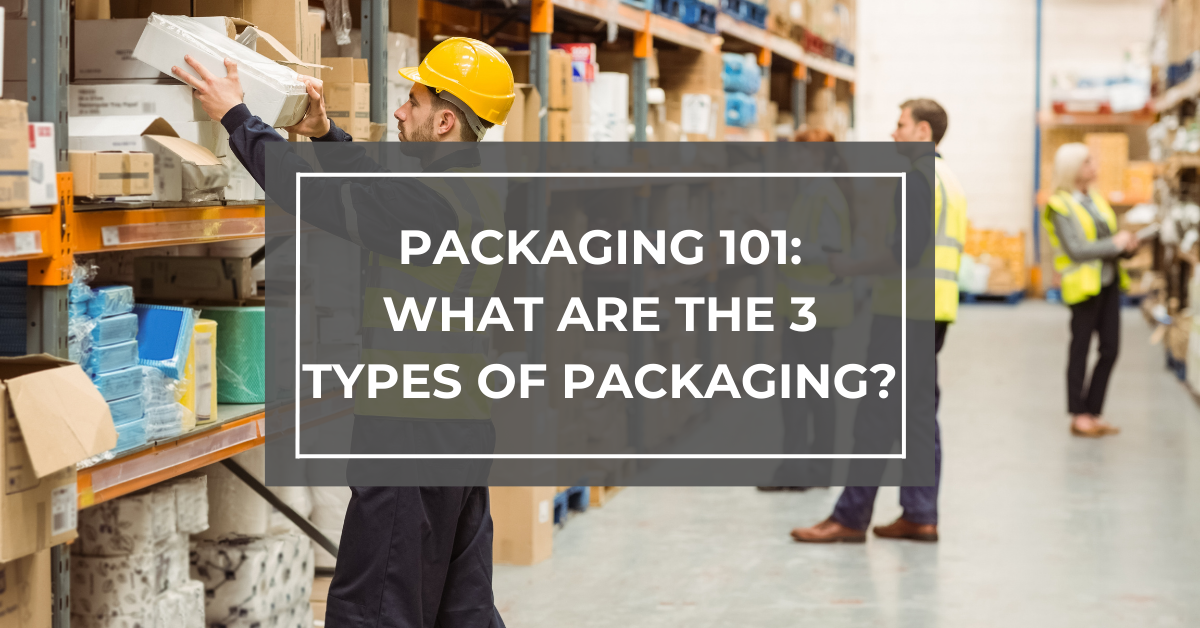Your basket is currently empty!
Packaging 101: What are the 3 Types of Packaging?
Packaging plays a crucial role in protecting products, ensuring quality, and creating a memorable customer experience. Whether you’re a small business, a growing company, or a large enterprise, understanding the different types of packaging can significantly impact efficiency and customer satisfaction. What are the 3 types of packaging – this blog will explore the 3 types of packaging: primary, secondary, and tertiary.

1. Primary Packaging
What is Primary Packaging?
Primary packaging is the first layer of protection that directly encases the product. It is often referred to as consumer or retail packaging because it is what the end user interacts with. Examples of primary packaging include bottles, cans, wrappers, and blister packs.
Benefits of Primary Packaging:
– Protection: Shields the product from contamination, damage, and spoilage.
– Information: Provides essential information about the product, such as ingredients, usage instructions, and expiry dates.
– Branding: Offers an opportunity to attract consumers and protect your brand through appealing design and brand messaging.
Examples of Application:
– Food and Beverage: Cans, cereal boxes, and yoghurt containers.
– Pharmaceuticals: Pill bottles and packs of plasters.
– Consumer Goods: Cosmetics, electronics, and household items.
2. Secondary Packaging
What is Secondary Packaging?
Secondary packaging groups primary packaged products together. This type of packaging is essential for logistics and retail purposes. Examples include cardboard boxes, trays, and shrink wrap.
Benefits of Secondary Packaging:
– Organisation: Helps in bundling multiple units of a product, making them easier to handle and transport.
– Protection: Provides an additional layer of protection against physical damage during transit.
– Display: Often used for marketing purposes in retail settings, aiding in product presentation and visibility.
Examples of Application:
– Retail: Display boxes for items like toothpaste tubes or snack packs.
– Logistics: Cartons and boxes used for shipping multiple units of a product.
– E-commerce: Packaging that ensures products arrive safely to the consumer’s doorstep.
3. Tertiary Packaging
What is Tertiary Packaging?
Tertiary packaging is used for bulk handling, storage, and transportation of products. This type of packaging includes pallets, crates, and large shipping containers.
Benefits of Tertiary Packaging:
– Efficiency: Facilitates the easy and safe movement of large quantities of goods.
– Cost-Effective: Reduces handling costs and improves supply chain efficiency.
– Protection: Ensures that products remain intact and undamaged during long-distance transportation.
Applications:
– Warehouse Storage: Pallets stacked with boxes of goods.
– Distribution: Crates and containers used for transporting products to distribution centres and retail outlets.
– International Shipping: Large containers that secure products during overseas transport.
Conclusion
Understanding the 3 types of packaging – primary, secondary, and tertiary – is essential for optimising your business operations. Each type of packaging serves a specific purpose, from protecting individual products to allowing for efficient transportation and storage. By effectively utilising these packaging types, your business can enhance product safety, improve logistics, and create a positive customer experience.
No matter the industry, recognising the importance of packaging can help you make informed decisions that drive your business forward. Stay ahead of the competition by mastering the art of packaging and ensuring your products reach customers in perfect condition.


